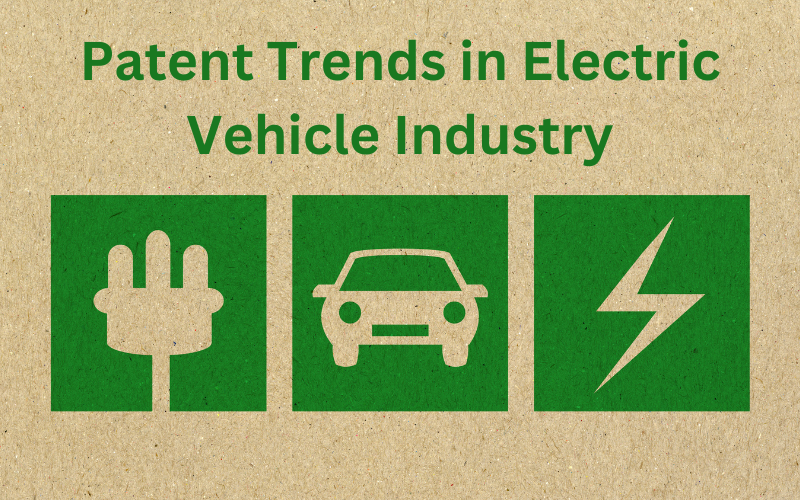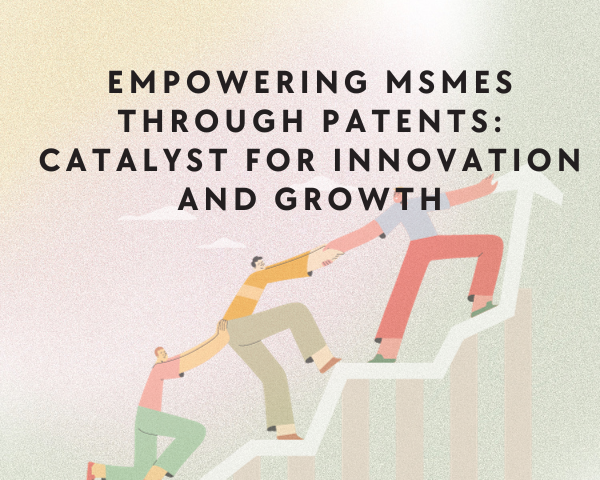The International Energy Agency has noted exponential growth in the Electric Vehicle (EV) industry in recent years due to factors such as improved range, wider model availability and increased performance. Major car markets saw a steep incline in sales of EVs, touching a record high of 6.6 million in 2021 despite the pandemic. While major economies like the United States of America lead the way, emerging countries are yet to fully embrace this industry due to lack of infrastructure and higher costs. However, governments across the world have made an effort to boost the industry by offering grants, subsidies, tax rebates and other financial benefits. Due to the growth in this sector, innovation has flourished with companies across the globe racing to file patents for new EV inventions.
Surge in Inventions
The growing popularity of the EV sector does not merely stem from environmental concerns but also the opportunities it brings forth. Startups, as well as bigger companies, have been thriving in this environment of innovation. The shift from traditional automotive technology resulted in an amalgamation of EV technology, giving rise to many battery technology innovations. For example, between 2005 and 2018, the European Patent Office reported an increase of 14% in the international patent families for electricity storage, of which 88% related to battery technology. The primary patentees of battery technology were Samsung, Panasonic, LG Electronics, Toyota, Hitachi etc., which were mostly based out of Asia.
While some companies tried to patent two to three technologies at once, certain companies focused on just one. The United States of America and China were the leading countries with extensive research being conducted on EVs and led the way in patent applications between 2010 and 2020. Japan, Korea, Germany, Canada and Australia have also been at the helm of filing patents for EVs and allied technology.
Since patents are an efficient indicator of technological development, the trends of patent applications and patents granted provide insight into the changes occurring within this new industry. Apart from battery technology, which is at the heart of the EV industry, there were a considerable number of patents filed for the Breaking System, Steering System and Arrangement of Propulsion. However, Chassis and Arrangement of Batteries are some areas still at the nascent stage in patenting and can be revolutionized for the EV industry as well as the automotive industry.
The automotive industry has not previously mingled extensively with competitors, firms, and inventors outside the automotive industry. However, this trend saw a change in the EV sector. The substantially different technologies required for manufacturing EVs lead to a network between firms, innovators, and competitors. Merely restricting the outlook towards just the prevalent technology could not suffice the need of the EV industry. This was another reason behind the tremendous potential of this sector, also leading to higher investments. The automobile industry has adapted to the fact that normal product development methods will not suffice when catering to the automobile industry as the technology required for EVs is substantially different.
Key Players, Startups, and Competition
Global patent trends in the EV industry reflect that in 2020, more than 18,000 patents were filed with an average grant rate of 50%. The immense potential has also driven up competition in the industry. Innovative practices have led key players in the market to aim for the protection of their intellectual property.
The patent filing trends show that the overall filings are increasing; however, the sub-technologies have followed a different trend. For example, the Arrangement of Batteries has seen a downtrend in filings, whereas the Arrangement of Electronics and Arrangement of Propulsion has seen above-average growth. While most technologies have experienced either an increase or stagnancy in filing patents relating to EV technology, certain areas which are common to both the automotive industry and the EV industry, such as steering systems have been unaffected.
Start-ups have played an important role in the development of the EV space and currently own diverse patents. There were start-ups like Sakti3 which led with 69 patents; NovaTorque with around 36 patents and Wireless Advanced Vehicle Electrification (WAVE) with around 25 patents. Most of these start-ups were acquired by major players like Dyson and Ideanomics. A report analysed the various avenues start-ups are choosing in order to protect and develop their intellectual property. There is a core focus on battery charging systems with Dcbel Inc., Ze Way SAS and Fermata LLC leading the way.
Broad Patents
The rise in EVs has also provided an opportunity for allied technologies to flourish. For example, EV charging stations have become the hotbed for filing patents. However, in the race to patent these new technologies, a common trend or strategy being adopted is the filing of overly broad patents. A broad patent keeps the claims technically vague to garner wider protection. These are deliberately vague on the specifics, lack technical details of the invention and consequently may even fail to provide solutions. This is a fundamental reason for the patents not being granted or remain pending. In ChargePoint, Inc. v. SemaConnect, Inc., the court had held that the claims relating to a wireless vehicle charging station were patent ineligible by virtue of being abstract and vague. Similarly, many patent applications suffer from this vice as the need to seek wider protection becomes important in this race.
Indian Trends In The EV Space
India, like most other global players, has been keen to uphold its end of global climate change agreements and maintain energy security interests. The Indian government launched the FAME (Faster Adoption and Manufacturing of Hybrid and Electric Vehicles) programme in 2015 and simultaneously approved the PLI (Product Linked Incentive) Scheme. Such incentives have led to increased production and demand for EVs. It is a common phenomenon that such an environment of growth leads to innovations which are also reflected in the steady rise of EV and allied technology patents filed in India. The primary assignees or applicants in India are Honda Motor Co., LG Chem Ltd., Toyota, TVS Motor Co. Ltd. etc. Lithium batteries, which are an indispensable component of EVs and have been at the apex for research and development globally, have seen an upsurge in India only recently. The primary assignees or applicants here, too were Honda Motor Co., Toyota and LG Chem Ltd.
India has a heavy reliance on public transport, due to which innovation for larger passenger movement, with electric buses, three-wheelers and two-wheelers, is at the forefront. Manufacturing EV components and setting up a new base for the same does not seem plausible in the current environment; therefore, there may also be a focus on using pre-existing assembly lines of conventional vehicles to also manufacture EV components. Daimler AG’s patent, for example, is an example of how a conventional truck would be converted into an EV.
The Parliamentary Standing Committee published a report on Electric and Hybrid Mobility in India. It was noted in the report that India did not manufacture lithium-ion batteries and was reliant on the international market for its EV technology needs. While major economies spend an average of 5-6% for their research and development on technological advancements, India merely spends less than 1%. One of the key recommendations for this was to improve research and development to promote indigenous manufacturing and reduce dependency. This is a fundamental step to ensure increased innovation, consequently resulting in increased patent filing trends.
Conclusion
The EV boom is here to stay, and the race is bound to get more competitive. The global trends indicate fast growth with a focus on research and development. While some companies rely on open-sourcing their patents, the majority are using diverse strategies to protect and hone their IP development path. Parallelly, India is slowly but surely joining the race with the government’s goals for the future, pushing for innovation. The patent trends of the future, specifically post the break that occurred due to the pandemic, are going to be indicative of how the EV sector bounces back and at what rate. The patent knowledge will inadvertently become more mature with the competition that key players, as well as start-ups, bring about. Patents in the EV space are now key clues to gauge the momentum at which the industry is set to grow.




